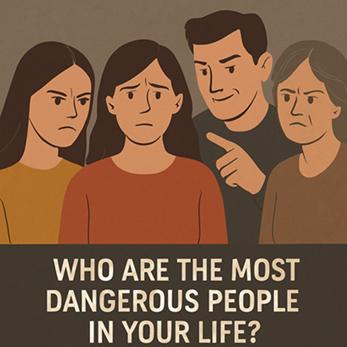How to Know if You Are in a Cult and How to Get Out

Imagine waking up one day and questioning everything you’ve been taught by a group you once trusted. You feel uneasy but can’t pinpoint why. Could it be a cult? Cults aren’t just relics of history or fodder for documentaries—they exist today, often disguised as spiritual movements, self-help programs, or even professional networks. This guide helps you recognize the signs and offers a roadmap to reclaim your freedom.
Understanding Cults: More Than Just Strange Beliefs
A cult isn’t defined by its beliefs but by its control mechanisms. According to experts like Steven Hassan, author of Combating Cult Mind Control, cults use the BITE Model (Behavior, Information, Thought, and Emotional control) to dominate members. Unlike healthy communities, cults prioritize obedience over autonomy, exploiting members physically, emotionally, or financially.
10 Warning Signs You Might Be in a Cult
-
Charismatic, Authoritarian Leader: The group revolves around a leader deemed infallible, whose word is law.
-
Us vs. Them Mentality: Outsiders are labeled “evil” or “misguided,” fostering dependency on the group.
-
Isolation: Members are discouraged from contacting family or friends, cutting off external support.
-
Financial Exploitation: Pressure to donate assets or income, often under guilt or fear.
-
Fear of Leaving: Threats of harm, damnation, or shunning if you question or exit.
-
Loss of Autonomy: Decisions about work, relationships, or daily life are controlled.
-
Secretive Practices: Hidden doctrines or rituals revealed only to committed members.
-
Love Bombing: Overwhelming affection to recruit or guilt-trip members into staying.
-
Punishment for Dissent: Criticism leads to public shaming, expulsion, or worse.
-
Reality Distortion: Gaslighting makes you doubt your perceptions (e.g., “You’re too flawed to understand”).
Example: A member wanting to visit family is told, “Only the group can save you. Outsiders will lead you astray.”
The Psychology of Control: How Cults Manipulate
Cults dismantle critical thinking through:
-
Indoctrination: Repetitive teachings replace personal beliefs.
-
Sleep Deprivation/Diet Control: Exhaustion lowers resistance.
-
Information Control: Restricting access to media or opposing views.
-
Emotional Manipulation: Fear of abandonment keeps members compliant.
Hypothetical Scenario: A member is praised for donating savings but shamed for expressing doubt, creating a cycle of reward and punishment.
Taking the First Step: Acknowledging the Problem
Admitting you’re in a cult is painful but courageous. Start by:
-
Journaling: Document inconsistencies in teachings vs. actions.
-
Self-Reflection: Ask, “Do I stay out of fear or genuine belief?”
-
Research: Compare group practices to the BITE Model.
Tip: Trust your instincts. If something feels wrong, it likely is.
Creating an Exit Strategy: Safety First
Leaving can be dangerous. Plan carefully:
-
Seek Support: Confide in a trusted outsider or contact organizations like the International Cultic Studies Association (ICSA).
-
Secure Resources: Gather ID, money, and essentials. Store them outside the group.
-
Discreet Communication: Use a secret phone or email to avoid surveillance.
-
Leave Swiftly: Choose a moment when leaders aren’t monitoring you.
-
Cut Ties: Block group contacts and avoid known meeting spots.
Caution: If threatened, involve law enforcement. Your safety is paramount.
Life After the Cult: Healing and Moving Forward
Post-exit challenges include guilt, identity loss, and trauma. Rebuild by:
-
Therapy: Specialists in cult recovery can help process trauma.
-
Support Groups: Connect with survivors (e.g., ICSA forums).
-
Reclaiming Autonomy: Rediscover hobbies, beliefs, and values.
-
Rebuilding Relationships: Mend ties with family, but set boundaries if needed.
Quote: “Healing isn’t linear. Allow yourself time to grieve and grow.” — Cult survivor testimonial.
Where to Find Help
- Books: Combating Cult Mind Control by Steven Hassan; Take Back Your Life by Janja Lalich.
-
Therapy Networks: Psychology Today.
Conclusion
Leaving a cult is a brave step toward reclaiming your life. While the journey is tough, support is available. Remember, true communities uplift—they don’t control. Trust yourself, seek help, and know that healing is possible.You are not alone.
Additional Resources: ICSA Website, Cult Recovery Toolkit.
This guide balances empathy with practicality, empowering readers to act while acknowledging the emotional complexity of leaving a cult. By focusing on signs, strategies, and recovery, it offers a lifeline to those questioning their reality.
Company Info
Customer Service
Product Information
- TASER® and Stun Devices Regulations by State
- TASER® Safe Escape Product Replacement Guarantee
- TASER® Comparison Chart
- TASER® User Manuals
- TASER® Warranty Info
- Byrna Product Catalog
- PepperBall Manuals & Spec Sheets
- Pepper Spray Laws
- Air Gun Laws
- States that Restrict Automatic and Butterfly Knives
- Our Print Catalog



































































